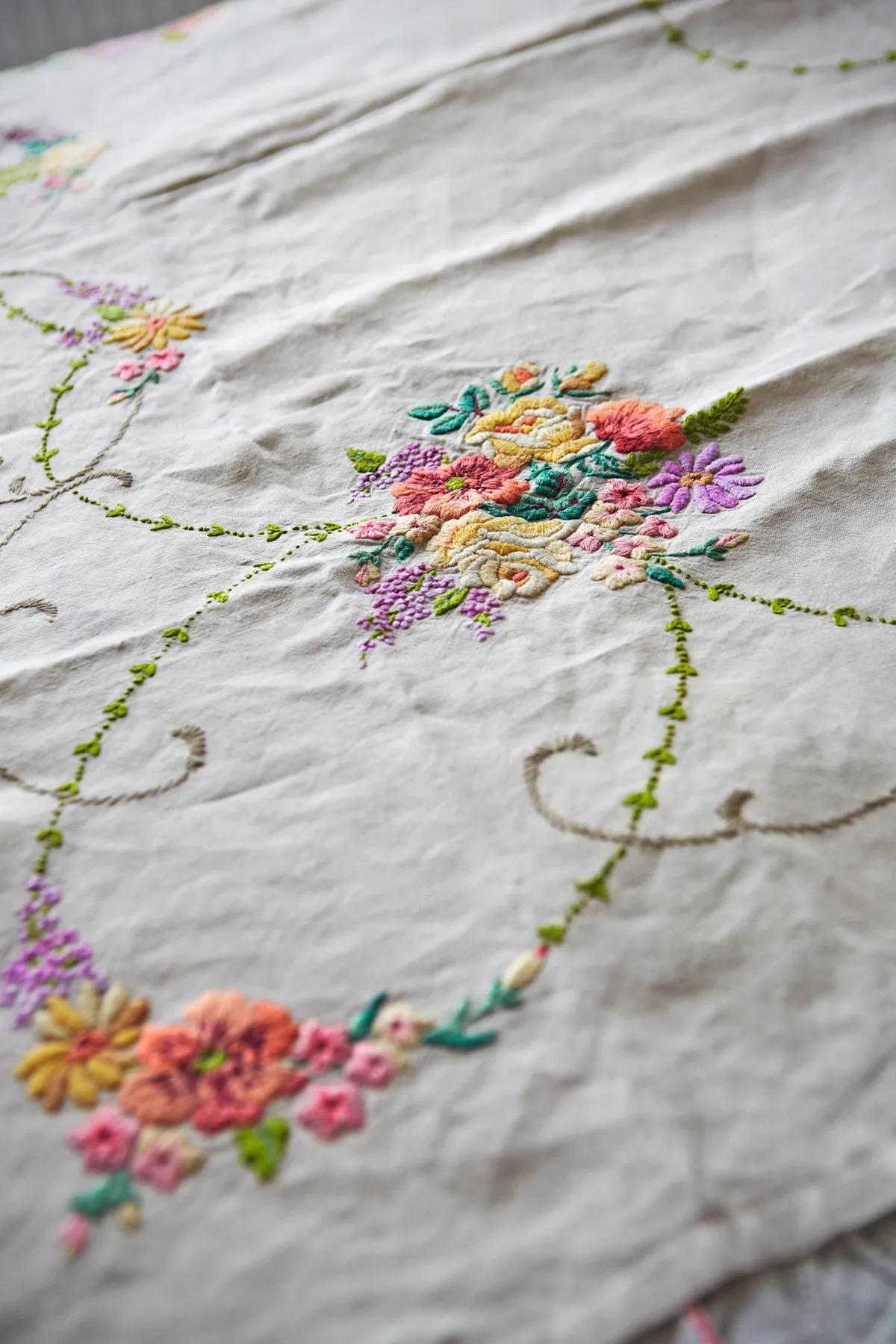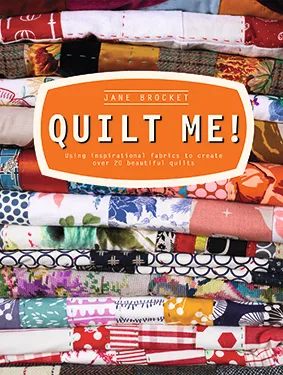These days, few of us knowhow to do satin stitch, chain stitch and French knots but, as mini works of art, vintage table linen has an unfaded appeal: itis both useful and beautiful. ‘I remember watching my granny embroidering. In those days, needlework was something everyone did. And when I was young I enjoyed it too,’ recalls Ange Cumming, explaining what drew her to become a specialist dealer. It’s the colourful embroideries of the early 20th century she likes best, she says. ‘I love the fact ordinary people have sat there and done all that work. It’s taken so many hours, and some of it is so skilled that you can’t tell the front from the back.’
In the early 20th century, the passion for home embroidery was widespread. ‘It was what women did in their spare time. They could buy kits, complete with the cloth, transfer design and silks they needed, for tablecloths and other items such as linen for trays and trolleys, coasters, runners and napkins. Some were sold printed with the design ready to embroider, others with transfers to iron on. Magazines such as Woman’s Weekly included free transfers, or readers wrote away for them. During the two World Wars, and in times of economic hardship when fabrics were expensive and difficult to come by, old linen was also reused,’ says Jane Bow, an eBay dealer.

Fairistych, a Scottish business founded by T F Beckett in 1919, was one of the most famous companies feeding the demand for decorative patterns featuring elaborate arrangements of flora and fauna, complete with silks and detailed instructions on which stitches and shades to use. ‘Today these are some of the most sought-after table linens – they have dense embroidery and raised areas that give the design a three-dimensional effect,’ says Jane.
Designs featuring scenes suchas cottages, dancers and gardens were also very fashionable, and in the 1930s and 40s there was a nostalgic vogue for embroidered crinoline ladies, which today’s collectors still love. ‘Ten years ago, they were snapped up by collectors in South Korea, but that fashion seems to have waned, although the Australians still want them,’ says Ange
Embroidered table linens were also popular souvenirs as early 20th-century tourism developed. Look out for pieces from Marghab Linens featuring cutwork, appliqué and embroidery in shades of taupe and white, which were handmade in Madeirafrom the 1930s to 1980s. ‘Cypriot embroidery made in Lefkara and featuring bold geometric designs, often combined with lace and drawn thread work, is also keenly collected,’ says Ange.

As with any collecting area, quality and condition are key to establishing value. ‘In general, the more embroidery there is, the more sought after the linen and therefore the higher the price,’ says Ange. Since table linens have often been used, stainsand holes are not unusual and will affect the price, although you can repurpose damaged pieces to make quilts, tote bags and cushions. You may have to pay £200 to £300 for a heavily embroidered large tablecloth, but you can often buy mats and smaller items for £12 to £16. Etsy, eBay and charity shops are all good sources for buying. Large boxes of linen also turn up at auctions and house clearance sales, typically sold in large bundles, so you’ll have to sift through to find the treasures.
‘It’s a beautiful craft that’s basically lost,’ says Ange, although there is a glimmer of hope on the horizon. ‘Since lockdown, I’ve sold all my embroidery kits so, with time their hands, people have once again turned to crafting.
What to look for:
1
Craftsmanship
Densely patterned, colourful designs finely stitched: check the back for neatness, too.
2
Condition
Even if the piece appears new, unfold it and look for stains and holes – these can usually be dealt with but will reduce the value.
3
Subjects
Flowers, cottages, gardens and crinoline ladies.
4
Size
Tablecloths and napkinsin larger sizes and bigger sets are most desirable.
